When it comes to how ancient civilizations communicate with the modern era, it’s often through their incredible works of art. There are few things that strike a chord with humanity more than artworks, and the ancient Greeks were masters of their craft. Greece is positively overflowing with rich lore and incredible stores, often told not just through words, but through art.
It’s the reason why so many history buffs make little pilgrimages to museums focused on ancient Greece. The Greeks of ages long past have made their mark on history in so many ways—and they’ve cemented their place through various pieces of art. It’s never a bad idea to dive into some of ancient Greece’s most incredible artworks and talk about the history behind each piece.
The Venus of Milo

Some of the most incredible ancient Greek works of art are the ones with an air of mystery around it. Of course, most pieces of ancient civilizations are mysterious by default, but there are some that spark the imagination more than others. One example is the Venus of Milo, a sculpture from the Hellenistic Period discovered on the island of Milo. A single glance at the marble sculpture shows the incredible amount of talent that went into such a piece, but nothing is known about the creator.
The Venus of Milo (or Milos) showcases the beauty of the female form, and there’s plenty of mystery involving the sculpture’s lost arms. It’s amazing that so much of the sculpture remains intact considering the time period. The Venus of Milo is undoubtedly one of the most captivating pieces of ancient Greek art.
Fallen Warrior from Temple of Aphaia

The ancient Greeks were known to be very fond of tragedies. In fact, the very concept of the story came from the Greeks. This particular sculpture is known as the Fallen/Dying Warrior, for obvious reasons. It showcases a once powerful Greek soldier, dying on the ground, trying to use his shield (called the hoplon) to get back on his feet. The ravages of time have destroyed a section of the right leg, but that only serves to give the sculpture even more of an impact.
There is a simple beauty to a tragedy, a bittersweet thing as everyone knows we all have to fall someday. The heroic Greek soldier struggling to get up and very likely within moments of death is ironic, as the Fallen Warrior refuses to die, even after so many years. Perhaps one day, when it crumbles, he will finally rest.
The Riace bronzes
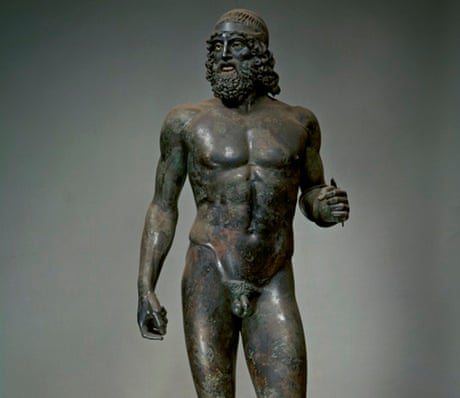
When you look at the image above, what’s the first thing that comes to mind? The fact that it’s a beautiful sculpture? That the sculpture is made of bronze? When you consider all the beautiful works of art from the ancient Greek world, it’s sometimes challenging to find a quality that sets it apart from the rest. However, the Riace bronzes absolutely have a distinction that sets it apart from many other artworks.
This bronze statue is one of the purest examples of true Greek art—a bronze figure from the classical age of Greece. You won’t find many of these around, and many similar sculptures are simply reproductions from the Roman era, which you usually find in museums. The Riace bronzes are truly special, as they showcase legitimate Greek art from the 5th century BC.
The Mask of Agamemnon

The Mask of Agamemnon holds the distinction of being called the Mona Lisa of prehistory. It’s a mask made of solid gold, which was found over a body in an ancient grave in Mycenae. The fascinating thing about this funeral mask is that while it’s called the Mask of Agamemnon, the body it was discovered with was not Agamemnon. In fact, the mask is dated around 1500 BC, which was well before Agamemnon’s time.
The mask is a stunning example of art and culture all the way from a time considered ancient even by the standard of the ancient Greeks. It serves as yet another example of beautiful and tragic art from the world of gods, minotaurs, nymphs and satyrs.
The Siren Vase
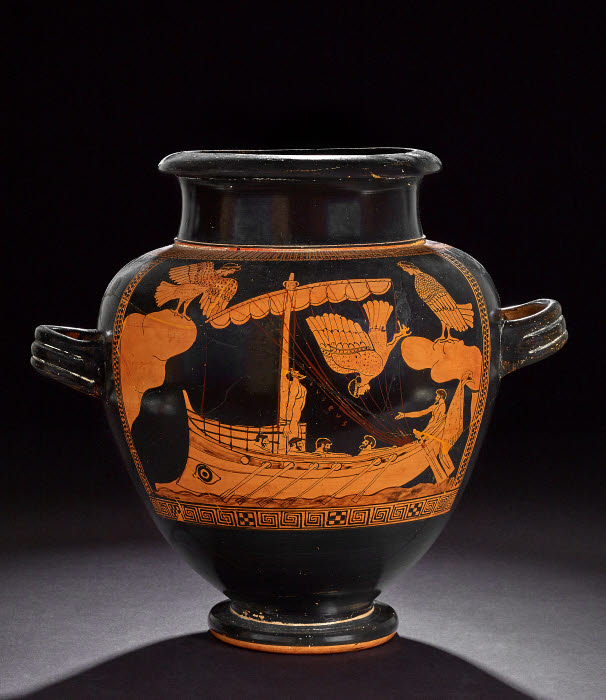
It would be remiss to talk about ancient Greek art and not mention one of the most commonly found pieces of art in the time period: pottery. Greek pottery is famous around the globe as it’s one of the most common canvases for ancient Greek art. In this case, this piece of art showcases Odysseus’ curious penchant for trouble. He longed to hear the voice of the sirens that so readily drew sailors to their deaths.
To help ensure he survived such an ordeal, Odysseus gave his sailors ear plugs to endure the siren’s songs, yet had himself lashed to the mast so he could hear. Sure enough, the siren’s song filled the air, and Odysseus struggled against his bonds to follow them. It’s only one part of an epic tale, and it’s captured perfectly in the Siren Vase.
The Motya Charioteer
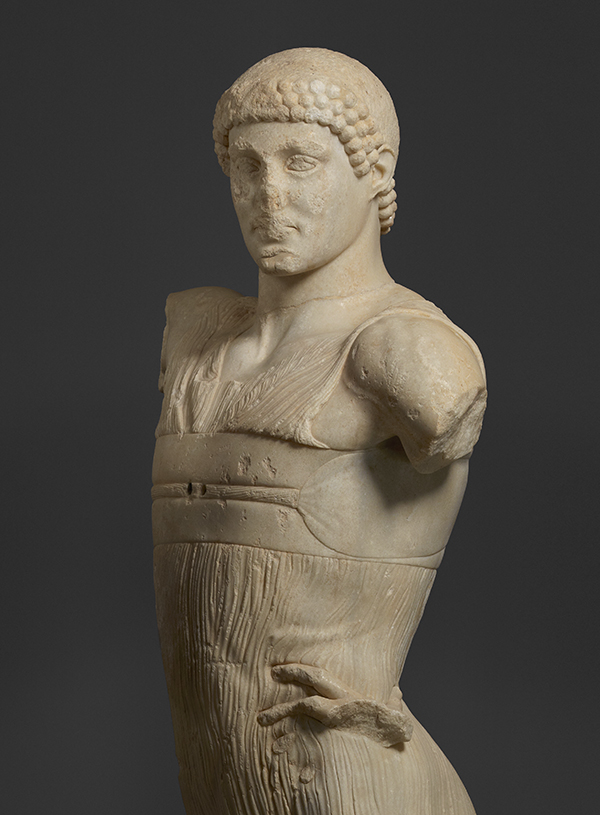
You’ve likely already noticed how many ancient Greek sculptures tend to be as majestic as they are erotic. These sculptures were meant to showcase the beauty of the human form, both male and female. The Motya Charioteer is an example of the former, where even the clothing of the athlete is sculpted to be as tight as possible, leaving little to the imagination.
Athletes in ancient Greece were treated much the same way as they are now—with reverence. Sculptures of ancient Greek athletes were treated seriously, and there’s almost a sensual air about the Motya Charioteer. It seems like such a thing was done on purpose, as it’s present on many beautiful Greek sculptures.
Goddesses of the Parthenon
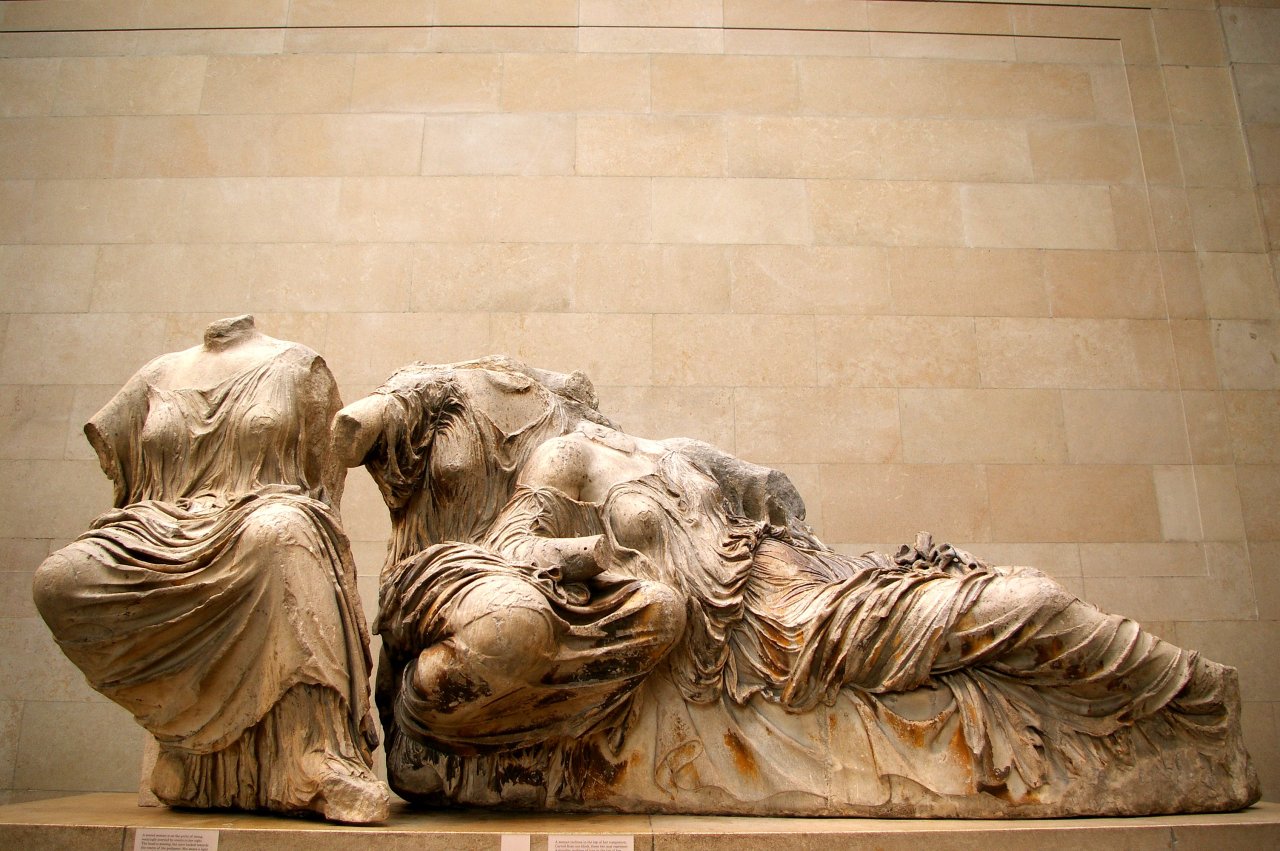
There’s just something about the beauty of the female form draped in wonderfully detailed clothing that captures the hearts and minds of people from all ages. Leonardo da Vinci himself would paint beautiful works showcasing detailed female forms, but it pales in comparison to this particular piece of ancient Greek majesty. The Goddesses of the Parthenon in Athens are beautifully detailed, almost like a painting, yet the sculptor had to create these vivid details in stone.
The result is a sculpture that is as divine as the goddesses themselves are portrayed. It’s the true work of a master, and the fact that the sculptor is lost to time gives this piece a more potent air of mystery.
The Resting Satyr

You can usually tell the popularity of a work of art based on the number of reproductions it has, especially for marble sculptures. The Resting Satyr is one such sculpture, having garnered so much popularity in succeeding years that there are plenty of copies—beautiful in their own right.
The original sculpture is attributed to the famous ancient Greek sculptor, Praxiteles. Considering the number of copies concerning the Resting Satyr, it’s safe to assume that even during the time, the Satyr was one of Praxiteles’ most famous works, if not his most famous piece.
The Nike of Samothrace (Winged Victory)

The Greeks from the old age have a habit of capturing the hearts and minds of modern civilization, especially the ones depicting gods and goddesses. The ancient Greeks—much like many other ancient civilizations—had deity presiding over victory. The Nike of Samothrace showcases the goddess of victory in all her majestic splendor.
The fact that the great sculpture is missing parts simply adds to the allure of the piece. What’s even more amazing is that the sculpture of the wings remains intact. While the ancient Greeks were eventually conquered by the Romans, the tenacity of the goddess of victory, with her wings standing the test of time, is still a victory for the Greeks.
The Pergamon Altar
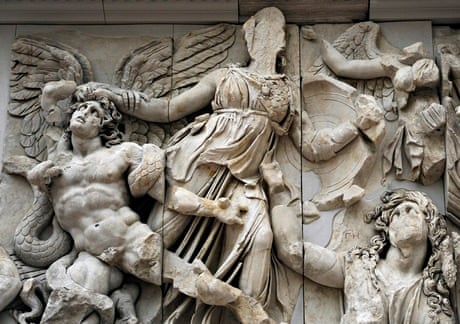
One of the fascinating things about ancient civilizations is how you can usually tell the mood of the time period based on their most extraordinary pieces of art. In the case of the ancient Greeks, the Hellenistic period came right after the death of Alexander the Great. The unfortunate thing is that the power gap left by the conqueror spelled the downfall of Greek conquest.
It was only a matter of time before all the petty squabbling was eventually ended by the Roman empire. During the Hellenistic Period, ancient Greek art was experiencing a transformation toward the dramatic, emotional, and the tragic. The Pergamon Altar is testament to that fact.